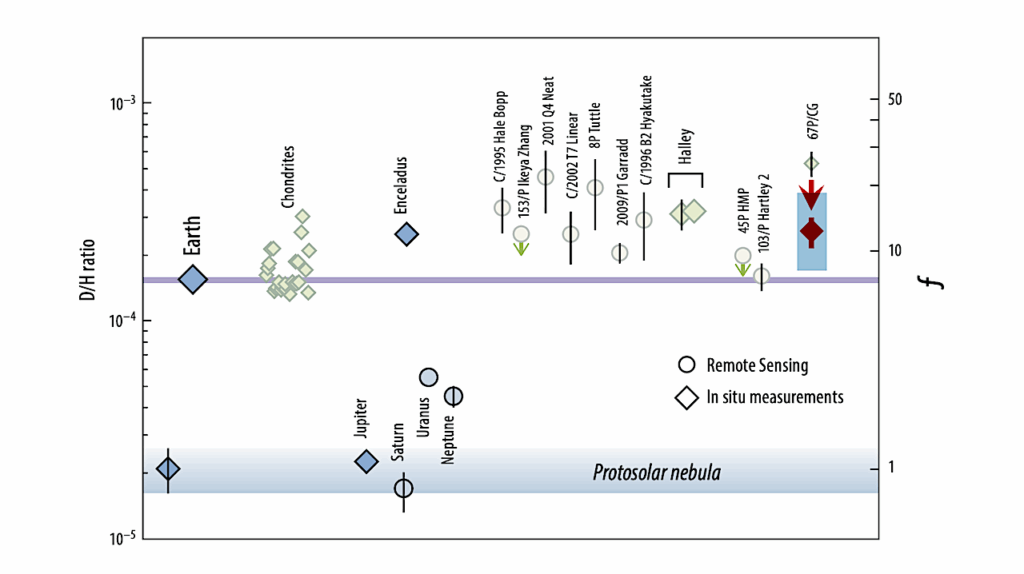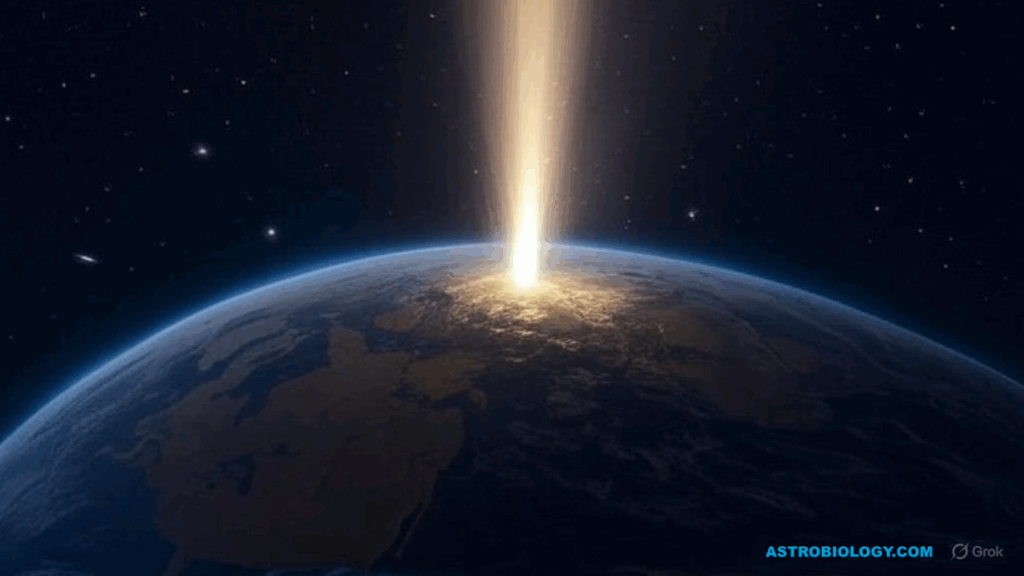Earth is Bombarded at Random

Do mass extinctions, like the fall of the dinosaurs, and the formation of large impact craters on Earth occur together at regular intervals?
“This question has been under discussion for more than thirty years now,” says Matthias Meier from ETH Zurich’s Institute of Geochemistry and Petrology. As late as 2015, US researchers indicated that impact craters were formed on Earth around every 26 million years. “We have determined, however, that asteroids don’t hit the Earth at periodic intervals,” says Meier, refuting the popular hypothesis.
In the past, researchers have even postulated the existence of a companion star to the Sun. This supposed dim dwarf star, named Nemesis after the Greek goddess of revenge, was believed to draw near to the Sun every 26 million years and cause asteroids to bombard Earth. This would next occur in around 10 million years. Nemesis, however, has never been found.
False data corrected
Today, we know of around 190 impact craters on Earth, with diameters ranging from a few metres to more than 100 kilometres. They range from just a few years to billions of years old. Matthias Meier and his former doctoral student Sanna Holm-Alwmark at Lund University restricted their analysis to craters formed within the last 500 million years, since the emergence of the first complex life forms. Holm-Alwmark then discovered that some of the dates used in previous studies were false, and have now been corrected. She arrived at a list of 22 craters whose exact age is known to within one percent.
Meier then analysed these impacts using circular spectral analysis (CSA). The timeline of events was represented in a circle with a particular range – in this case, 26 million years. If events repeated themselves regularly within this timespan, the points would have arranged themselves in a particular area of the circle. In their work, which was published in the British journal Monthly Notices of the Royal Astronomical Society, Meier and Holm-Alwmark showed that there was no such accumulation.
Almost the same age, but far apart
The researchers also determined that some of the impact craters were almost exactly the same age. “Some of these craters could have been formed by the collision of an asteroid accompanied by a moon,” suggests Meier. “But in other cases, the impact sites are too far away from each other for this to be the explanation.” A clear example of this is the 66 million-year-old Chicxulub crater in Mexico, which has been linked to the extinction of the dinosaurs, and the Boltysh crater in the Ukraine, which was formed at almost exactly the same time. “We have no definitive explanation for that,” says Meier. One possible cause could be a collision between two fragments in the asteroid belt, forming debris which might then have quickly found its way to Earth.
One thing is certain, however: craters with similar ages could distort the results of the analysis. “Our work has shown that just a few of these so-called impact clusters are enough to suggest a semblance of periodicity,” says Meier, explaining that because the researchers of the 2015 study overlooked the formation of these clusters, their statistical method led them in the wrong direction.
Reference
Meier MMM, Holm-Alwmark S: A tale of clusters: No resolvable periodicity in the terrestrial impact cratering report. Monthly Notices of the Royal Astronomical Society, 6 March 2017, doi: 10.1093/mnras/stx211 [http://dx.doi.org/10.1093/mnras/stx211]








